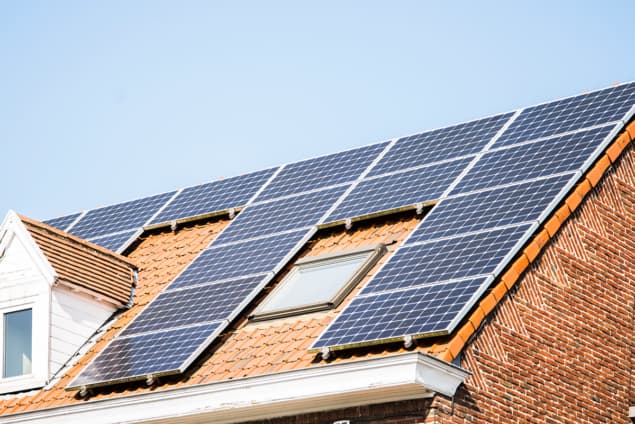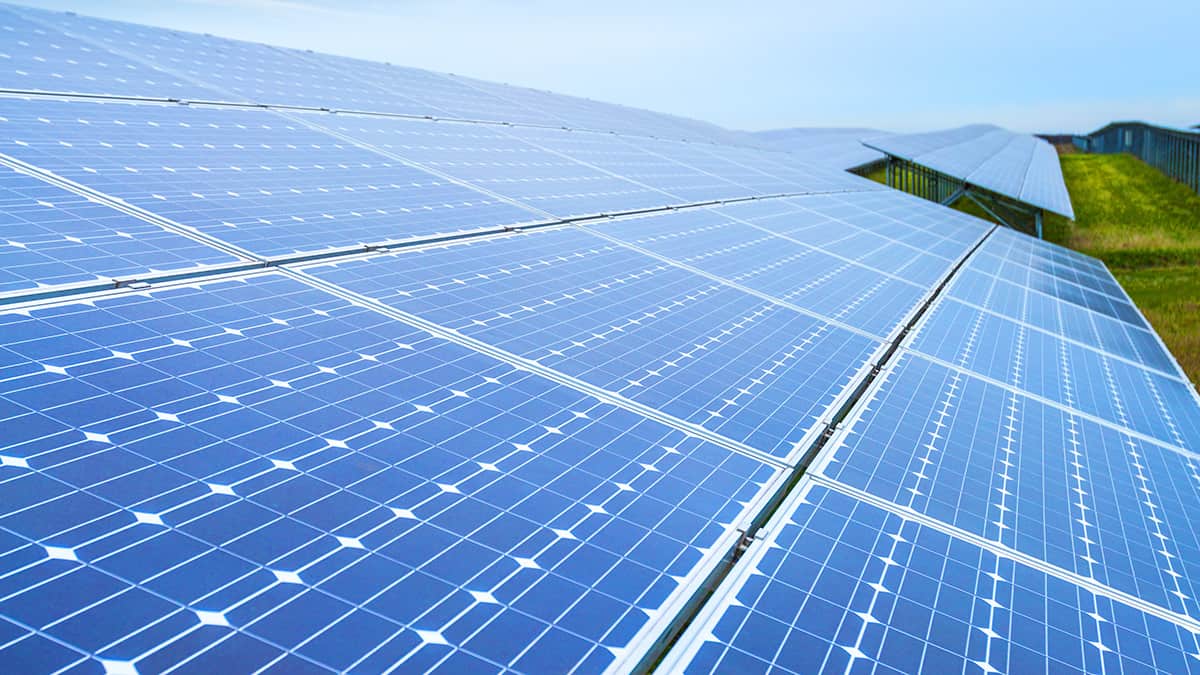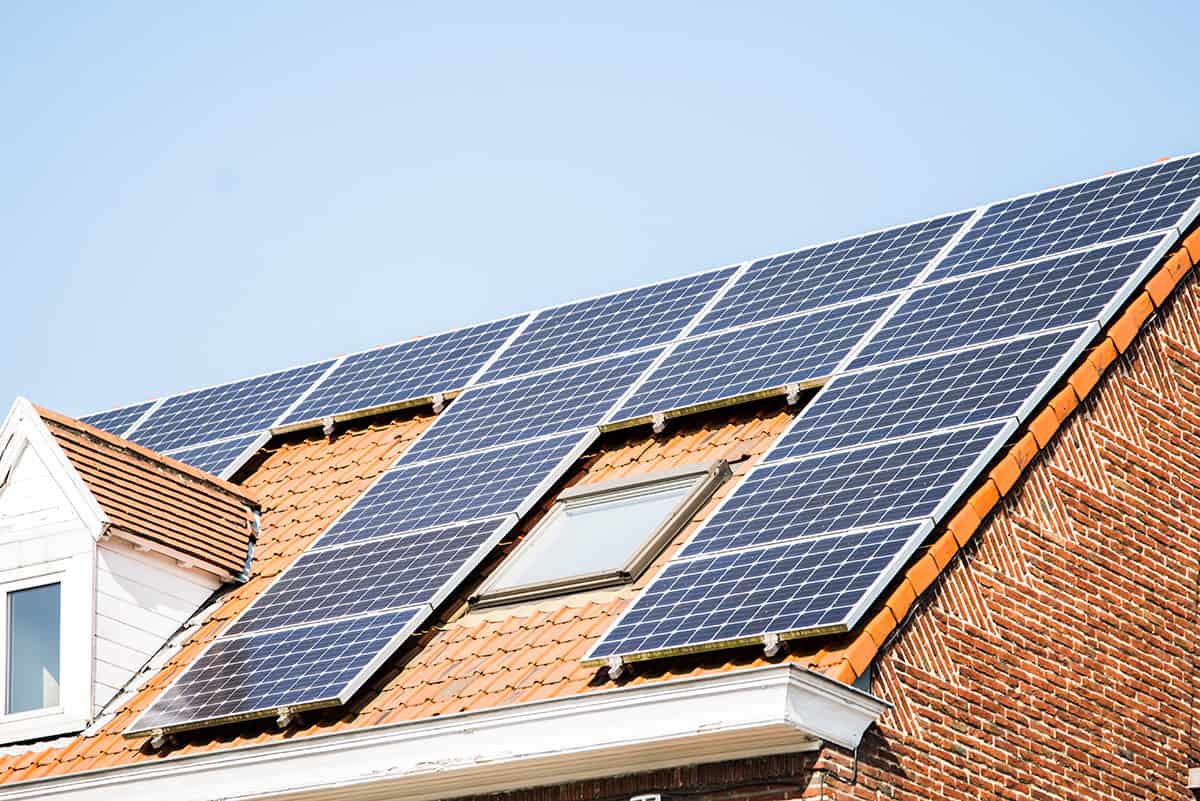
A systematic review of 116 papers looking at how solar panels affect the surrounding environment has found that they can significantly warm cities during the day. This heating can also affect the performance of the photovoltaic (PV) systems, the study found. The researchers suggest future work should focus on increasing the reflectance of wavelengths of sunlight not converted to electricity. Lead author of the review, David Sailor of Arizona State University, explains why.
Why was there a need for a systematic review like this?
I was frustrated that there have been a handful of publications that have introduced inaccurate representations of the energy balance of photovoltaics in the urban environment and have, as a result, made claims about the potential for photovoltaics, for example, to cool the urban environment when, in fact, the energy balance is much more complex and the implications for the urban environment are correspondingly complex.
What research did you include in your study?
We felt that it would be useful to provide a more holistic viewpoint of photovoltaics in the environment. We wanted to understand not just how putting PV systems in the urban environment affects buildings and urban air temperatures and so forth but also – the other end of that equation – how the urban environment affects the performance of photovoltaic systems.
What did you find?
We arrived at several key conclusions. One had to do with photovoltaics and their relationship with the urban energy balance. Specifically, we found that photovoltaics can significantly warm the urban environment during the day, but typically cool the urban environment at night.
The second key finding was that for a number of reasons when you put photovoltaics in an urban setting, they don’t perform as well as they might in some other settings, rural and suburban, for example.
Why do solar panels have this heat effect on the urban environment?
It’s important to put all of my discussion on this topic in the context that it depends on what you’re comparing a particular application to. So, the example would be if you put photovoltaics on an existing black roof, you’re not having as much of an adverse effect on the urban thermal environment as if you put those photovoltaics on a white roof, because a white roof would normally be a relatively cool surface.
When you put photovoltaics on that white roof, the PV panels typically absorb in the order of 90% of the energy of the sun. And the photovoltaic panels then do convert some of that energy to electricity, but typical panels today are only maybe 16–20% efficient. These panels are absorbing a tremendous amount of energy from the sun, converting some of it into electricity, but then warming up because they’re not able to use all of the energy.
So, these photovoltaic panels tend to be rather hot surfaces in the environment. They’re almost always installed in an elevated format – above a roof surface or above ground level in a field. And as a result, you end up having two hot surfaces, the top surface of the panels and the underside surface of the panels. And so, as air flows over these panels, it readily picks up that heat essentially twice as effectively as it would if you had the same temperature on a building surface or a ground surface.
What effect does this heating have on the local urban environment?
There are several studies out there that have looked at panels from a modelling perspective and others have looked at observational data.
I’ve been involved in one project where we went out into the field and did measurements in and around a photovoltaic array in the desert, and then in an area not too far away that was a similar desert environment [the reference site]. What we found in that observational study was that the average air temperature at 1.5 m in the PV array site was about 1.3 °C warmer than the reference site, which is the non-PV site. At night we found almost no effect. And so, our observational studies lead us to conclude that PVs do, in fact, have this warming effect during the day, whereas at night the effect can either be very small or negligible and difficult to measure.
Other studies, particularly modelling studies, had previously suggested a daytime cooling effect of photovoltaics. But those had a flawed representation of the PV panels, where they ignored the fact that photovoltaics are able to convect heat from both the top and bottom surfaces.
Does this have an impact on people’s energy use for cooling of buildings?
It does. And again, that impact we found to be very complex. There are a number of studies out there that have demonstrated that if you put photovoltaics on a rooftop of a building, you reduce the annual air conditioning energy consumption of that building. And that makes sense in that these photovoltaic panels and provide shading from the direct sunlight. So, the building doesn’t get nearly the solar load it would normally have penetrating through the roof surface. And so that’s a mechanism whereby we would expect to have an air conditioning benefit.
Likewise, you could have a heating penalty in the winter where you desire to have that solar radiation reaching the building surface, but PV panels are actually shading the building.
We found that in particularly warm climates such as Phoenix [Arizona, USA] for residential building stock, that the PV panels actually have a rather complicated set of trade-offs. They do give us a benefit of shading our buildings directly from the Sun during the day. But at night, where the building roof surface would normally radiate its energy out into space and help to cool that roof surface rapidly, the PV panels actually obstruct the view of the building to the sky slowing that heat loss at night-time. As a result, you actually increase the air conditioning load of a residential building at night.
You mentioned that this heating can affect the solar panels, how does that work?
Traditional silicon based PV have what’s known as a temperature coefficient, that is, their efficiency is a function of surface temperature of the solar cells themselves. And so, if you are in a hotter environment, if the photovoltaic surface is hotter, then it will be less efficient. The temperature coefficient is typically on the order of about 4% per degree Celsius for the cell temperature. What this means is while photovoltaics are typically tested at a standard test condition of 25 °C, if you’re operating in an urban environment – we’ve had plenty of measurements of PV in installations here in Phoenix – where the PV surface temperature easily gets to 60–65 °C or even hotter, you reduce the efficiency by something on the order of 10–15% overall.
What can be done to mitigate these effects?
I don’t want to be interpreted as suggesting that photovoltaics are not good things. Photovoltaics are a very important component of our future energy mix as we try to save the planet from global warming. That said, I think there’s an opportunity to design panels that are more effective at rejecting the heat that they don’t turn into electricity.

Sunny superpower: solar cells close in on 50% efficiency
For the portion of the spectrum that [the panel] is not able to convert into electricity, perhaps we can design coatings on our PV systems that are essentially highly reflective of these wavelengths or more highly emissive of their own energy. You can look to some of the recent advances in material science that are known as passive radiative cooling technologies. If you can imagine a surface that is extremely efficient at radiating its energy in, say, the eight to 13 micron range, then you can essentially radiate the heat away from the surface through the atmospheric window.
I can imagine combining some of these innovations in material science with our conventional developments of photovoltaics and creating a next generation of maybe what we might call “cool photovoltaics”. So, PV panels that are perhaps only as efficient as our current generation of PV but are thermally much more efficient so that they run much cooler. Also, because of the temperature coefficient, they would likely receive an additional benefit in terms of efficiency – running at cooler temperatures and provide less warming to the urban environment.
The review is published in Energy and Buildings.
